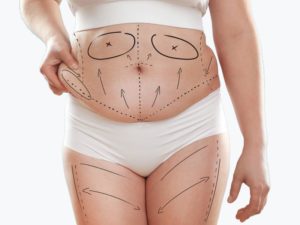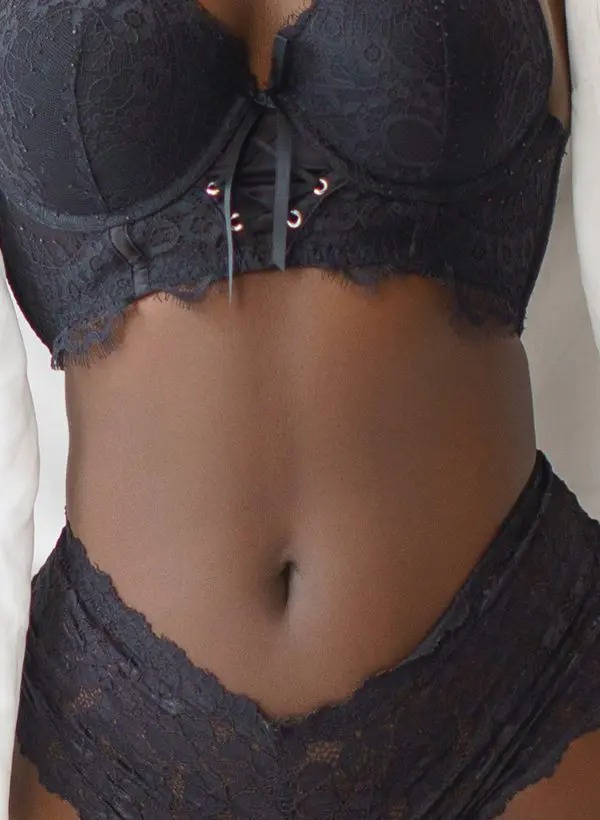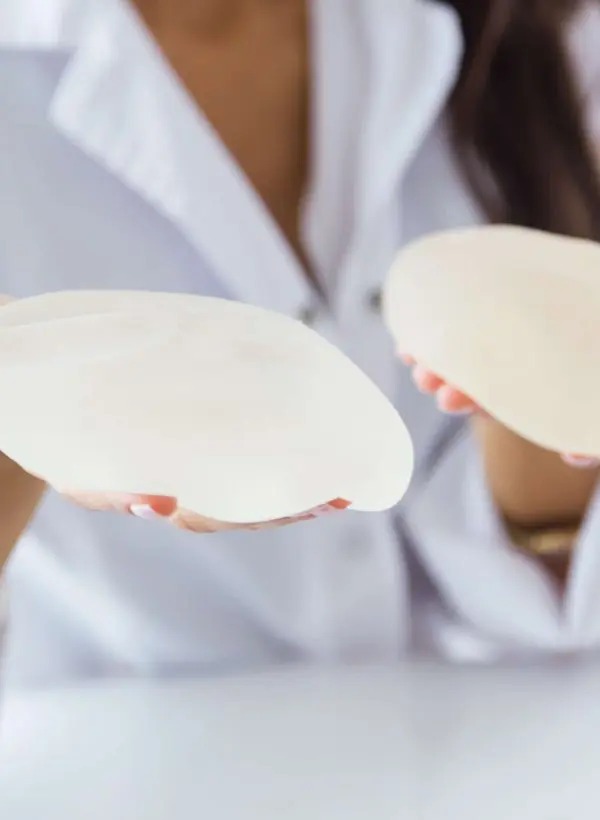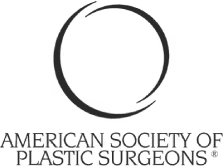Treatments — Breast
Breast reduction
If you’ve ever struggled to find clothes that fit properly, felt self-conscious about your chest, or experienced back and shoulder pain from heavy breasts, you’re not alone. Many women deal with the physical and emotional weight of having overly large breasts.
Dr Faisal Salim, one of the best breast reduction surgeons in Dubai, understands how breast size can affect posture, comfort, confidence, and quality of life. That’s why he offers advanced, natural-looking breast reduction in Dubai—designed around your unique body and goals.
It’s about more than size—it’s about reclaiming your freedom.

Breast Reduction, also known as reduction mammaplasty, is a surgical procedure that reduces the size of overly large breasts. This procedure can help improve a woman’s physical comfort, reduce back and neck pain, and improve the overall shape and size of the breasts. When choosing a surgeon to perform a breast reduction, it is important to look for a board-certified breast surgeon in Dubai with experience in breast surgery.
What is a breast reduction procedure?
Breast reduction surgery, or reduction mammoplasty surgery, is a cosmetic procedure to remove excess breast fat, glandular tissue, and skin from the breasts.
The goal is to achieve a smaller, firmer, and more proportionate breast size. This surgery can also improve posture, back pain, and skin irritation caused by large breasts.
Benefits of breast reduction surgery in Dubai
- Relieves chronic neck, back, and shoulder pain caused by heavy breasts.
- Improves posture by reducing chest weight and strain on the spine.
- Makes physical activities and exercise more comfortable and accessible.
- Enhances body proportions and improves the fit of clothing.
- Reduces skin irritation, rashes, and infections beneath the breasts.
- Boosts self-esteem and body confidence by addressing physical concerns.
- Improves sleep quality by easing discomfort during rest.
Good candidate for breast reduction Dubai
Breast reduction surgery can greatly enhance the quality of life for those experiencing physical discomfort or emotional distress due to overly large breasts.
You’re likely a good candidate for breast reduction procedure if:
- You experience chronic neck and back pain due to large breasts.
- You face difficulty performing physical activities or exercise.
- You have postural issues.
- You experience a chronic rash or skin irritation under your breasts.
- You face trouble finding well-fitting clothing or bras.
- You feel self-conscious about your breast size.
Breast reduction may not be suitable for individuals who:
- Smoke, as it can impair healing.
- Have diabetes or heart problems.
- Are clinically obese.
- Have unrealistic expectations of the procedure.
You might consider postponing the procedure if you:
- Plan to become pregnant, as breastfeeding may be affected.
- Are aiming to lose significant weight, since breast size may change with weight loss.
Types of breast reduction procedures in Dubai
Breast reduction surgery types vary depending on breast size, shape, and the amount of tissue that needs to be removed. Dr. Faisal selects the most appropriate method based on your anatomy and desired outcome.
Here are the most common types:
Vertical (lollipop) breast reduction
This breast reduction technique uses an incision around the areola extending vertically down to the breast crease.
It’s ideal for moderate reductions and allows excellent reshaping with less scarring than traditional methods. Dr Faisal often uses this method to achieve natural, lifted results.
Inverted-T (anchor) breast reduction
This method is suited for women with large, heavy breasts requiring significant volume reduction. It involves three incisions: around the areola, vertically down, and along the breast fold.
It allows for maximum reshaping and lift, especially when skin laxity is a concern.
Breast liposuction reduction
Liposuction can reduce volume through small incisions with minimal scarring for women with good skin tone and breasts composed mainly of fatty tissue.
It’s best for mild to moderate reductions without major reshaping.
The breast reduction surgery procedure – What to expect
Here’s a step-by-step overview of how breast reduction surgery is typically performed:
Initial consultation
Your journey begins with a thorough consultation. Dr Faisal evaluates your breast size, shape, skin elasticity, and overall health.
He also discusses your goals, medical history, and what to expect from the surgery, ensuring a truly personalised mammoplasty procedure plan.
Making the incisions
Dr Faisal uses one of the following incision techniques depending on the size of the reduction and your breast anatomy:
- Circular incision: around the outer edge of the areola
- Vertical incision: around the areola and extends vertically down to the breast crease
- Inverted-T or anchor incision: Starts around the areola, runs vertically down, and extends along the natural curve of the breast fold
These breast reduction techniques allow for precise removal of excess tissue while preserving nipple function and sensation.
Removing excess tissue and reshaping the breast
Dr Faisal meticulously removes excess breast fat, glandular tissue, and stretched skin that contributes to breast heaviness and droopiness.
He then reshapes the remaining tissue to create a natural, lifted contour that suits your body frame.
Repositioning the nipple and areola
In most cases, the nipple and areola are moved to a higher, more youthful position on the breast.
Dr Faisal may also resize the areola to keep it proportional with the new breast size, all while preserving sensation and function when possible.
Closing the incisions
The incisions are carefully closed with sutures beneath the skin to minimise scarring and promote natural healing.
His expert approach ensures the final result is smooth, symmetrical, and aligned with your desired aesthetic outcome.
Breast reduction recovery timeline
Recovery after breast reduction surgery can differ for each individual, but here’s a general timeline for breast reduction recovery:
Week 1: Initial recovery
- Expect swelling, bruising, and mild to moderate discomfort, which can be managed easily with pain medication.
- Wearing a compression garment or surgical bra helps support healing and reduce swelling.
- Rest is essential—avoid strenuous activities, heavy lifting, and stretching during this period.
Weeks 2-4: Gradual improvement
- Swelling and bruising begin to subside, and mobility gradually improves.
- Most patients feel well enough to return to work and resume light daily activities.
- With proper care, incisions start to heal, and scars begin to fade.
Months 3-6: Long-term healing
- The breasts will gradually settle into their final shape as residual swelling disappears.
- Scars continue to lighten and fade over time with proper skincare and sun protection.
- Patients can usually return to all regular physical activities, including exercise, as advised.
Male breast reduction in Dubai (Gynecomastia surgery)
Men with enlarged breasts (gynecomastia) can also benefit from male breast reduction in Dubai.
Dr Faisal performs this procedure using liposuction or glandular tissue excision to restore a flatter, more masculine chest.
Breast reduction cost in Dubai - What to know
If you’re wondering how much does a breast reduction surgery cost in Dubai, the price can vary based on:
- Surgical technique used
- Extent of reduction
- Hospital/surgical facility fees
- Surgeon’s expertise
Dr Faisal offers personalised consultations to provide a tailored treatment plan and cost estimate.
Reclaim comfort, confidence and control - Breast reduction in Dubai
If overly large breasts have been affecting your posture, mobility, or self-esteem, breast reduction surgery in Dubai can be life-changing. From relieving chronic pain to helping you feel more confident in your skin, the benefits go far beyond aesthetics.
Under the expert care of Dr Faisal Salim, one of the best plastic surgeon in Dubai for breast reduction, you’ll receive a treatment plan tailored to your body and goals—ensuring safe, natural-looking, and satisfying results.
Take the first step toward a lighter, more confident you.
FAQ's
Mammoplasty refers to any surgical procedure that reshapes or alters the size of the breasts, including breast augmentation, reduction, lift or reconstruction.
Mammoplasty is the cosmetic reshaping of the breasts, such as enlargement or reduction. Mastectomy involves removing breast tissue entirely, typically to treat or prevent cancer.
After your surgery, you’ll need to wear a special breast reduction bra—usually a soft, non-wired, compression or surgical bra. This helps minimise swelling, support healing tissues, and enhance comfort during recovery.
The breast reduction procedure steps typically include:
- Administering anaesthesia
- Making incisions (lollipop, anchor, or circular)
- Removing excess breast tissue, fat, and skin
- Reshaping and lifting the breast
- Repositioning the nipple and areola
- Closing the incisions with sutures
The breast reduction procedure can take 2.5 to 4 hours, depending on the extent of reduction, the technique used, and whether both breasts are being operated on.
Yes, but they usually fade significantly with time and proper care. Dr Faisal Salim uses techniques that minimise scarring as much as possible.
You may experience mild to moderate discomfort following breast reduction surgery, especially during the first few days. However, pain is usually well-controlled with prescribed medications and improves significantly as healing progresses.
As with any surgery, there are risks associated with breast reduction surgery in Dubai. This includes bleeding, infection, changes in sensation, scarring, and asymmetry.
The breast reduction procedure and recovery journey typically includes:
- Surgical removal of excess tissue and skin
- Reshaping and lifting the breast
- A few weeks of downtime for healing
You may experience swelling, bruising, and discomfort in the initial days. Most patients return to light activity within 2–3 weeks and resume full routines by 6–8 weeks.
Breast reduction in Dubai can provide patients with long-term benefits, including improved physical comfort, reduced back and neck pain, and improved breast shape and proportion.
The cost of breast reduction surgery in Dubai can vary depending on the procedure’s complexity, the surgeon’s expertise, and the clinic’s facilities. It’s best to consult directly with your surgeon for a customised quote.
One of the most common issues after breast reduction surgery is temporary changes in nipple sensation, which may include numbness or heightened sensitivity. Some patients may also experience mild asymmetry, scarring, or delayed wound healing, but these are typically manageable.
You can schedule a consultation with Dr Faisal Salim, one of the best breast reduction surgeon in Dubai, by contacting his breast clinic. He will assess your needs and provide a personalised treatment plan.
Brands We Trust





At a Glance
At a Glance
Duration
2-3 Hours
Anaesthetic
General
Overnight Stay
0 Days
Return to work
5-7 Days
Return to exercise
4 Weeks
Final result
6 Months

Related Treatments
Breast Lift in Dubai
Breast Reduction in Dubai
Liposuction in Dubai
Breast Augmentation in Dubai

Breast Augmentation and Lift in Dubai
Videos
Patient Testimonials
News & Resources

Wrinkles on face? Signs you may need a facelift
BREAST LIFT Wrinkles on face? Signs you may need a facelift Looking older than you feel? Your face might be trying to tell you something. Fine lines, deep creases, sagging skin—these are all types of wrinkles on face, and while they’re a natural part of aging, they don’t always match

Abdominoplasty vs Tummy Tuck: Is There Any Difference?
Abdominoplasty Abdominoplasty vs Tummy Tuck: Is There Any Difference? Tummy Tuck or Abdominoplasty – Same Goal, Two Names. Let’s Break It Down! If you’ve been exploring ways to achieve a flatter, firmer abdomen—especially after weight loss, pregnancy, or simply due to aging—you’ve likely come across the differences between Abdominoplasty vs

Breast Implants vs. Fat Transfer: Which is Right for You?
BREAST LIFT Breast Implants vs. Fat Transfer: Which is Right for You? Breast implants vs. fat transfer: Which is right for you? When it comes to enhancing the shape and size of your breasts, there are several options available. Two of the most popular choices are breast implants and fat






